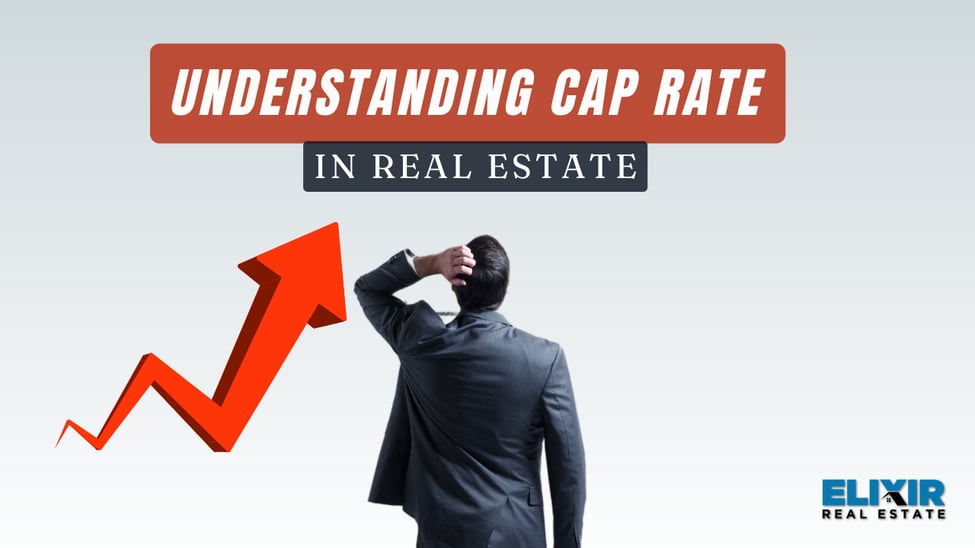Today, let us explore a crucial concept in real estate investing: the Capitalization Rate, or Cap Rate. Whether you're a seasoned investor or just starting, understanding Cap Rate is essential for evaluating property investments. This episode will definitely help you understand this concept very well and will try to make it simple.
So, what exactly is Cap Rate, and why is it important?
Cap Rate helps investors assess the potential return on an income-generating property. It's a quick way to compare the profitability of different real estate investments. Cap Rate is a ratio that measures the annual return on investment, based on the property's net operating income (NOI) and its current market value.=
The formula is simple: Cap Rate equals to NOI divided by the property's value. In other words, Cap Rate shows what percentage of your investment you can expect to earn back in a year, excluding financing costs. It's expressed as a percentage, making it easy to compare different properties. For understanding NOI better you can review our last episode here.
To calculate the Cap Rate, you need two key numbers: the property's Net Operating Income and its current market value.
Suppose you have a property valued at $500,000, and its annual net operating income is $50,000. To find the Cap Rate, divide the NOI by the property value.
In this example, the Cap Rate is 10%. This means you're earning a 10% return on your investment annually, based on the property's income and value.
Now, how do you interpret the Cap Rate? Generally, a higher Cap Rate indicates a higher return and risk. Conversely, a lower Cap Rate suggests a lower return with less risk. It's essential to balance these factors based on your investment strategy.
For instance, a property with a Cap Rate of 10% might be in a less desirable area, implying higher vacancy rates or maintenance costs. On the other hand, a 5% Cap Rate property in a prime location might offer more stability and consistent income. For example, properties in emerging suburban markets might offer higher Cap Rates due to the increased risk, while properties in stable, high-demand areas might have lower Cap Rates due to lower risk.
In downtown Toronto, you might find properties with Cap Rates around 3-5%. These lower Cap Rates reflect the high demand and stable market conditions. On the other hand, properties in developing areas like Hamilton or Oshawa might offer higher Cap Rates, say around 6-8%, reflecting the potential for higher returns but also higher risk.
These examples highlight the importance of understanding the local market conditions when evaluating Cap Rates.
Several factors can affect a property's Cap Rate. These include the property's condition, location, market demand, and overall economic conditions. Improvements and renovations can also impact the NOI, thus affecting the Cap Rate. For instance, upgrading a property's amenities can increase its NOI, leading to a higher Cap Rate.
Cap Rate is a valuable tool for comparing investment opportunities. It helps you assess whether a property aligns with your investment goals. However, it's crucial to consider it alongside other metrics like cash flow, appreciation potential, and financing costs.
Now let us look at some scenarios from the Greater Toronto Area to see how Cap Rates play out.
A multi-family property in Mississauga is valued at $1,500,000 with an annual NOI of $105,000.
This property has a Cap Rate of 7%. It's a solid investment with a good balance between return and risk, considering Mississauga's growing population and job market.
A retail space in downtown Toronto is valued at $3,000,000 with an NOI of $180,000.
This gives us a Cap Rate of 6%. While the return is lower, the prime location in downtown Toronto offers excellent stability and potential for long-term appreciation.
An industrial property in Brampton is valued at $2,200,000 with an NOI of $198,000.
This property has a Cap Rate of 9%, indicating a higher return. However, industrial properties can have higher vacancy rates, so it's essential to consider all factors.
Several factors can influence Cap Rate, including location, property condition, and market conditions. Let's take a closer look.
1. Location: Prime locations generally have lower Cap Rates due to higher demand, higher value and lower risk.
2. Property Condition: Well-maintained properties attract better tenants and higher rents. This directly impacts the NOI and Cap Rates.
3. Market Conditions: Economic factors, interest rates, and local market trends impact Cap Rates.
4. Lease Terms: Long-term leases with stable tenants can lower risk, affecting the Cap Rate.
5. Vacancy Rates: Higher vacancy rates increase risk and can result in higher Cap Rates.
Let us also consider some ballpark estimates for various commercial real estate categories,
Office Buildings: Typically range from 4% to 8%, with higher cap rates for properties in secondary markets or with lower-quality tenants.
Retail Properties: Can vary widely from 4% to 12%, depending on location, tenant mix, and lease terms. High-street retail in prime locations often has lower cap rates.
Industrial Properties: Generally range from 5% to 9%, but can be higher for properties in less desirable locations or with older buildings.
Multifamily Residential: Typically between 4% and 8%, with lower cap rates for properties in desirable urban areas and higher cap rates for properties in suburban or rural areas.
Single-Family Homes: Cap rates can vary significantly based on location and market conditions. As an investment property, they typically range from 4% to 8%.
Understanding Cap Rate is crucial for making informed real estate investment decisions. It helps you evaluate the potential return and compare different properties effectively. Remember to consider all factors and use Cap Rate as a guide, not the sole determinant.
Wish you all the very best! Reach out to our dedicated team at Elixir with any queries you have about real estate, and we will do our best to help.
Mudit Mehta
Broker of Record
ELIXIR REAL ESTATE INC.
Off: 416-816-6001 | [email protected]




